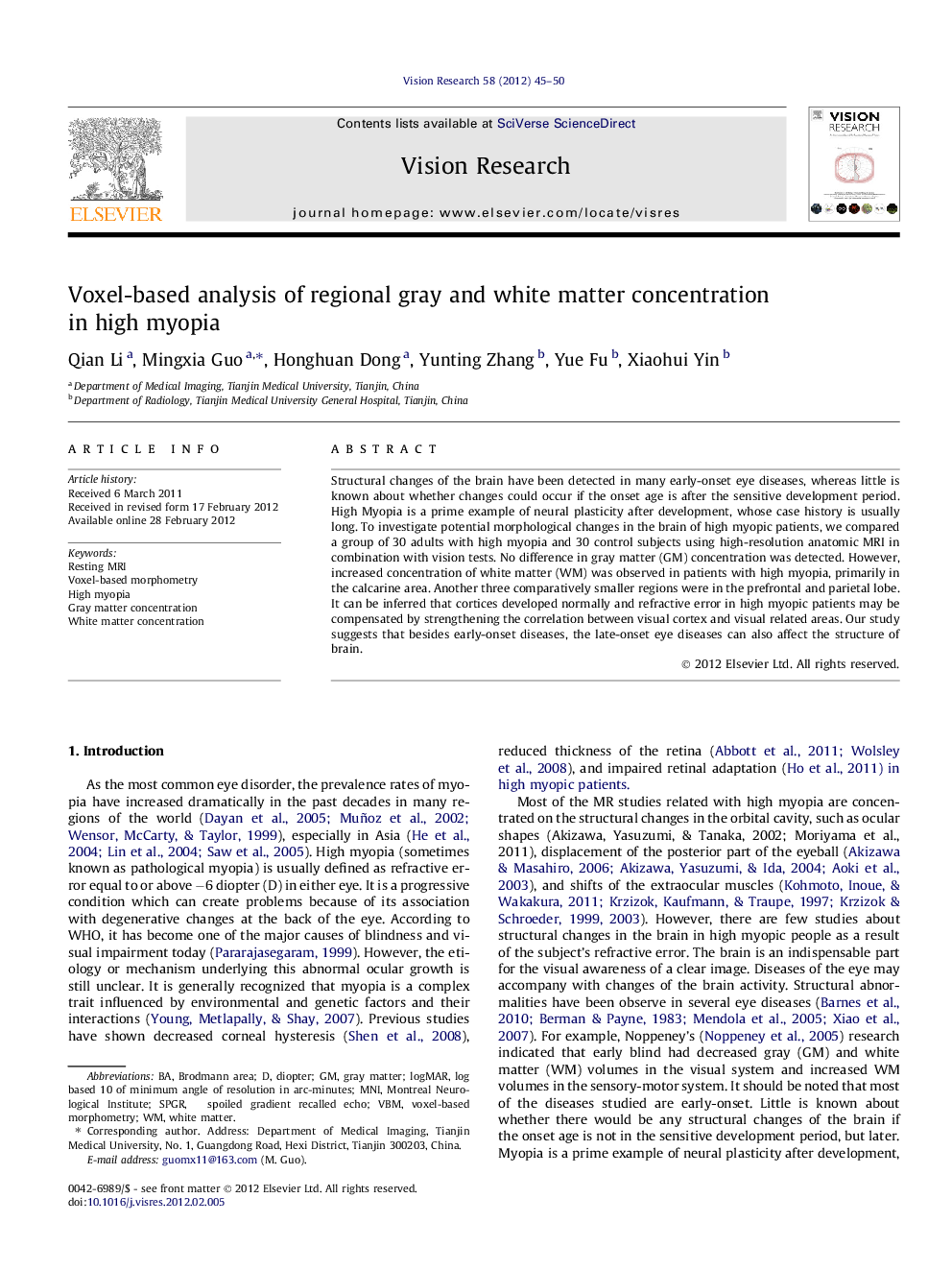| Article ID | Journal | Published Year | Pages | File Type |
|---|---|---|---|---|
| 4034045 | Vision Research | 2012 | 6 Pages |
Structural changes of the brain have been detected in many early-onset eye diseases, whereas little is known about whether changes could occur if the onset age is after the sensitive development period. High Myopia is a prime example of neural plasticity after development, whose case history is usually long. To investigate potential morphological changes in the brain of high myopic patients, we compared a group of 30 adults with high myopia and 30 control subjects using high-resolution anatomic MRI in combination with vision tests. No difference in gray matter (GM) concentration was detected. However, increased concentration of white matter (WM) was observed in patients with high myopia, primarily in the calcarine area. Another three comparatively smaller regions were in the prefrontal and parietal lobe. It can be inferred that cortices developed normally and refractive error in high myopic patients may be compensated by strengthening the correlation between visual cortex and visual related areas. Our study suggests that besides early-onset diseases, the late-onset eye diseases can also affect the structure of brain.
► VBM analysis was used to investigate the morphological changes of brain in subjects with high myopia. ► The high myopia showed no significant changes in gray matter concentration. ► The high myopia demonstrated increases in white matter concentration, mainly in calcarine area. ► Besides early-onset diseases, the late-onset eye diseases can also affect the structure of brain.
